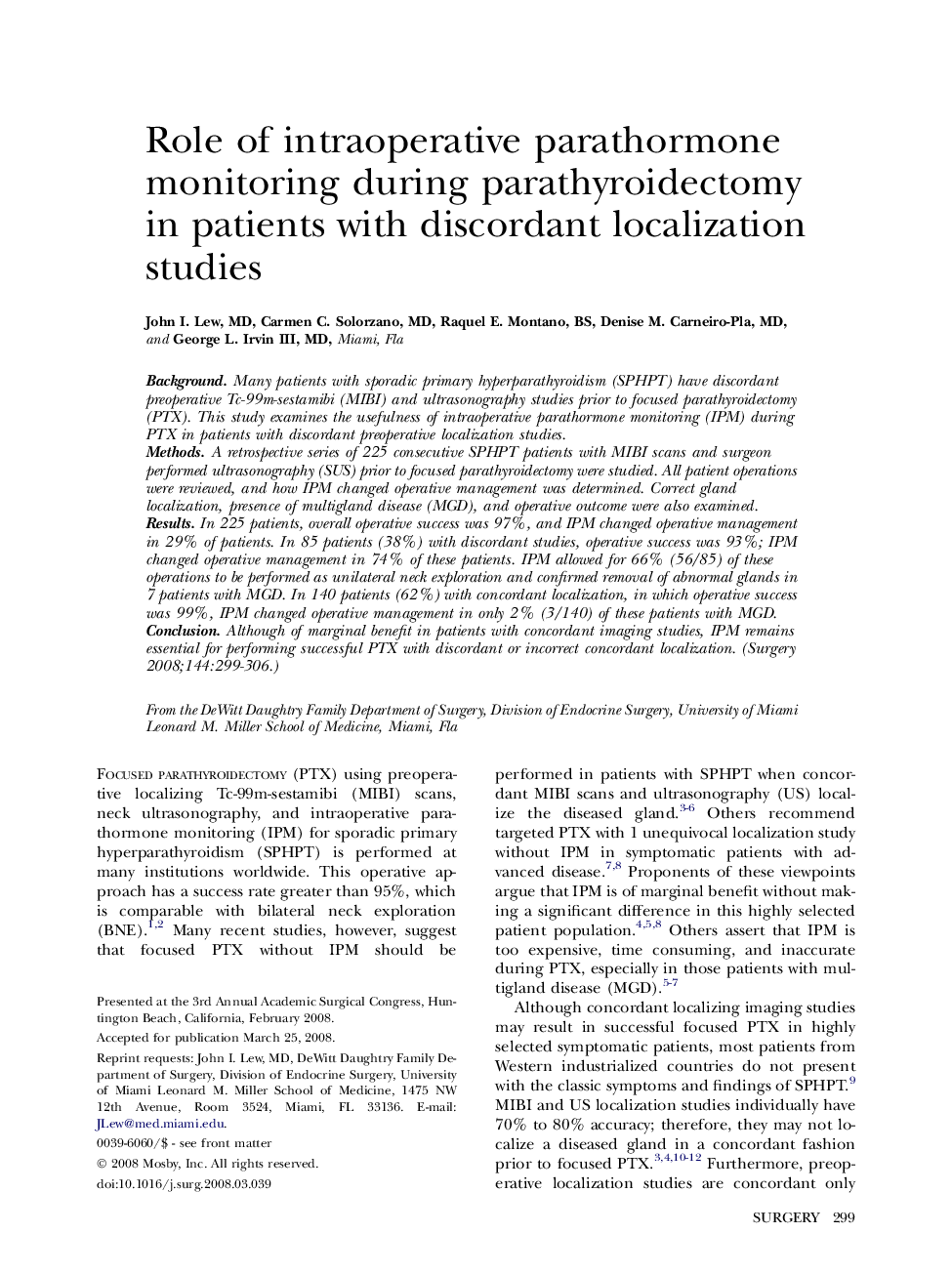| Article ID | Journal | Published Year | Pages | File Type |
|---|---|---|---|---|
| 4309467 | Surgery | 2008 | 8 Pages |
BackgroundMany patients with sporadic primary hyperparathyroidism (SPHPT) have discordant preoperative Tc-99m-sestamibi (MIBI) and ultrasonography studies prior to focused parathyroidectomy (PTX). This study examines the usefulness of intraoperative parathormone monitoring (IPM) during PTX in patients with discordant preoperative localization studies.MethodsA retrospective series of 225 consecutive SPHPT patients with MIBI scans and surgeon performed ultrasonography (SUS) prior to focused parathyroidectomy were studied. All patient operations were reviewed, and how IPM changed operative management was determined. Correct gland localization, presence of multigland disease (MGD), and operative outcome were also examined.ResultsIn 225 patients, overall operative success was 97%, and IPM changed operative management in 29% of patients. In 85 patients (38%) with discordant studies, operative success was 93%; IPM changed operative management in 74% of these patients. IPM allowed for 66% (56/85) of these operations to be performed as unilateral neck exploration and confirmed removal of abnormal glands in 7 patients with MGD. In 140 patients (62%) with concordant localization, in which operative success was 99%, IPM changed operative management in only 2% (3/140) of these patients with MGD.ConclusionAlthough of marginal benefit in patients with concordant imaging studies, IPM remains essential for performing successful PTX with discordant or incorrect concordant localization.
